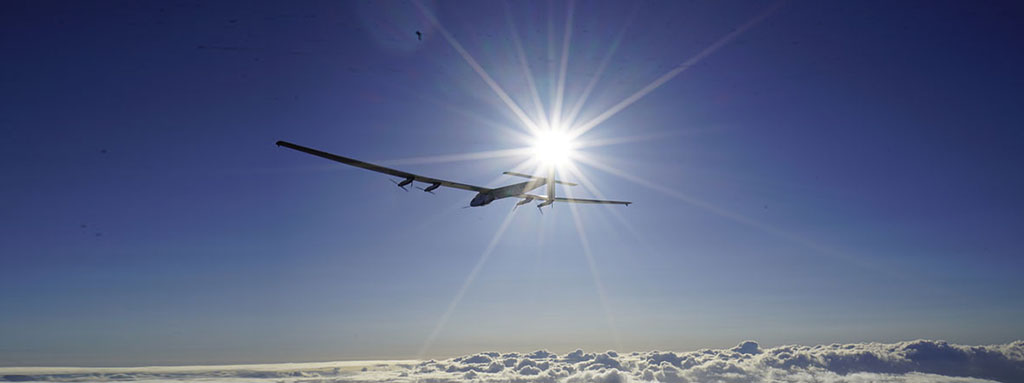For some years now, the aeronautical industry has been focusing its efforts on increasing aircraft efficiency by working on different fronts, such as improving engine performance, reducing the weight of aircraft by using new materials, optimising aerodynamics, etc.
This could be a project that opens up a path to a “clean future” in the aeronautics era.
Nevertheless, all this seems insufficient in view of current concerns. And, as a matter of fact, it is. The goal being sought in the very long-term though is to make it possible for aircraft not to have to depend on fossil fuels as they do today. Despite widespread scepticism, that is why initiatives like the Swiss Solar Impulse project are a breath of fresh air in the aeronautical industry.
The Solar Impulse II aircraft successfully completed its journey around the globe last July. It had taken off from Abu Dhabi 505 days before and covered 40,000 km in 17 stages, passing through Oman, India, Myanmar, China, Japan, the United States, Spain (Seville was its only European stopover) and Egypt. The adventure’s successful end does not mean it did not have to encounter any setbacks along the way, like breakdowns, damage to batteries during the voyage and even a heatwave which meant that the trip turned out to be longer than initially foreseen.
The Solar Impulse project was conceived in Switzerland by two pilots, Bertrand Piccard and André Borschberg in 2005. Its aim was to create an aeroplane having an unlimited range by using renewable energy, more specifically photovoltaic solar energy, without the need to use fossil fuels.
The aircraft has a wingspan of 72 metres, a length of 22 metres and weighs 2.30 tonnes. It is capable of reaching a speed of 70 knots (the journey’s average speed was between 45 and 55 kilometres per hour) and a maximum ceiling of 8,500 metres.
The main idea was to be able to fly all day long propelled only by the energy generated by 17,000 photovoltaic solar cells located on its wings. Any excess energy was in turn to be used to recharge its batteries for when it could not collect any sunlight. The aircraft does not need any energy other than solar energy, allowing it to continue flying all night long. Some aspects of its design and specifications still need to be ironed out to ensure they are not so sensitive to weather conditions. For instance, one of the problems it suffers is that the aircraft needs to be powered up to keep itself aloft and move forward in very hot conditions.
This could be a project that opens up a path to a “clean future” in the aeronautics era, as Borschberg himself commented in an interview for the El Mundo newspaper.
Both pilots are currently fully involved in the International Committee of Clean Technology, an NGO they set up to show the world the damage we are inflicting on the planet on which we live. In order to do so, they are trying to bring together the main stakeholders in the renewable energies field in order to help, advise and raise the awareness of governments about energy policies.
There is still a long way to go before we can see commercial aircraft carrying passengers and cargo that use solar power as fuel. There is no doubt, however, that it has been a very significant step forward to achieve this as far as the technological effort is concerned, in addition to raising the awareness of all of us who share this planet about these issues.



